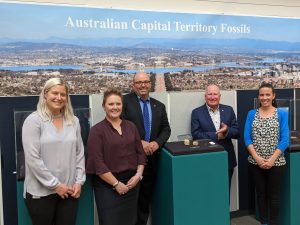Oozing manufactured spin
By VERITY DUNN
IN light of the recent Australian Federal Election, the increasing presence of politicians on social media sites has prompted users to question whether political parties are able to communicate in a manner that does not ooze manufactured spin.
Social media sites like Twitter, Facebook, online forums and blogs have changed the way political communication operates around the world. The initial stages of use in Australia have highlighted problems for users; politicians and the public alike. Sites are filled with inaccurate information, personal and political gaffs are rife, over-sharing is damaging for some and for many users there is a serious lack of two-way communication.
It is argued that politicians, while trying to get re-elected are attempting to use the new platforms as extensions of traditional media. Journalists are desperately competing for the new and ever expanding sources of information and are frantically trying to tweet it before the opposition. As well, voters are disillusioned that politicians do not respond to concerns and queries via the sites on which politicians are so willing sell the party line.
During the United States Presidential Election and the General Election in the United Kingdom, there was significant discussion over the influence of social media on the campaigns and the election outcomes. Barack Obama’s extremely successful campaign in the US used Facebook and Twitter as well as apps for the iPhone to spread his message of change.
The Australian election has similarly raised questions about the influence of the new platforms for public participation and news sharing, on voters and their preferences.
On Election 2010 website, Peter and Nic argue that the overwhelming winner for online communication is the voting public. As the policies, ideas and attitudes of the politicians and political parties have been available for public viewing and commentary online – therefore voters are not stuck listening to traditional media inevitably publishing party spin.
According to Labor Senator Kate Lundy, social media provides a new possibility for news creation and contribution as, “…it’s so immediate and in the same way that the internet democratised publishing I think social networking democratises news reporting.”
Author of Gillard vs. Abbott in the social media space on the Sixth Sense website, Kate Snow says social media “enables the galvanising of debate and support on key issues and for judgment to be passed on the performance of politicians or parties on key policies and programs.” In this sense traditional media can be bypassed as the public are able to express their opinions on the day’s issues and monitoring of such conversations provide insights into voter intentions.
However, while the platform for a range of information and commentary is now available, criticism has arisen surrounding the poor use of online engagement by political leaders, “using the medium as a loud hailer rather than a form of interactive engagement,” Peter and Nic from Election 2010 argue.
Some bloggers argue that politicians have taken a cautious, safe approach to the new media. An AFP article on the Yahoo 7 news website states: “…rather than capitalise on the momentum and extend their reach into new platforms like Twitter, both parties are retreating from the internet in a bid to stay on message and limit their exposure to criticism.”
Senator Lundy agrees the social media sites should be used as more than just another election platform.
“I didn’t try to apply my social networking presence for the purposes of campaigning per se or to pump out campaigning messages, but I wanted to make sure people could access where I was and learn about what I was doing during the campaign through the social networking sites,” she said.
During the election campaign Senator Lundy Tweeted in an “applied way”, about events and information where relevant to her electorate. She would tweet where she was and what she was doing so people would have the opportunity to talk to her. When her office published a press release they would notify her Twitter followers and provide a link to her new website posting.
It is said in the bloggesphere that Australian Parliamentarians see Facebook and other platforms as public relations noticeboards of one-way traffic, rather than dynamic tools of engagement. The argument is that to fully utilise social media you need to be having a two-way conversation, and truly engage with the audience, to be seen as fully participating and using the space effectively.
In The Twitter Election: Or is it? Darryl Adams says, “The major parties are simply using Twitter as another broadcast stream – promoting the traditional political process as if social media is another press release mechanism.”
Senator Lundy admits political parties are accustomed to presenting information in broadcast format; news bites with nothing longer than a two page press release. She says, “I think social media has exposed that weakness in the quality and the depth of the information in and around the policies that we’re trying to promote during an election campaign.”
It may not have been apparent in the recent election campaign, but Senator Lundy argues, “social media has in a way forced the hand of political parties to be more thoughtful and have stronger and more detailed information sitting within and around their policies that they present during a campaign.”
While Twitter has undoubtedly sped up the news cycle, Sydney Morning Herald Chief Political Correspondent, Phillip Coorey believes social media has changed the information distribution system entirely – and not necessarily in a more effective way.
The role of political communicators has been dramatically altered through the use and reliance on social media. Historically journalists were able to research, interview, fact-check and write a story one day in preparation for publication in the next day’s edition. Now Coorey says journalists are required to do more in less time. “You don’t the time to do things as efficiently as you used to be able to do them, you’re trying to do your old job plus this new job as well and the pressures are enormous to get stuff, get it faster, stand it up and get it out there,” Coorey says.
The news cycle has been transformed beyond speed. Social media provides a platform where everyone can be involved; some maintain the benefit is the lack of barriers and restrictions, allowing anyone to contribute. But Coorey contends this is also a negative in terms of balance. Compared to traditional media with “newspapers being forced to publish corrections if they get it wrong or even the internet having to take it off the website,” Coorey maintains misinformation and lies are difficult to stop and clarify as they spread so quickly. “So people make stuff up that seems plausible, people believe it and it just multiplies,” Coorey says.
According to Senator Lundy, social media participation played a role in the election outcome as it showed the disillusionment of voters towards political parties, “…because people had the means to find more information and inform themselves more effectively and it wasn’t there,” she said.
Senator Lundy admits people want more in depth information in the campaign rhetoric and social media provides the platform for distribution. “I think that having social media there allows people to explore in real time the issues and I actually think that has exposed a shallowness of the way political campaigns are run,” said Labor Senator Kate Lundy.
It may be too early to tell what influence the new forms of social media have had on the election outcome, but it is clear that more people’s opinions are being heard and shared more regularly and immediately than ever before. Whether politicians and political parties will adapt their policies or campaigning methods in response – only time will tell.
Research shows that the majority of social media users and contributors are between 18 to 30 years. The concerns, opinions and issues raised by these individuals admittedly do not represent the entire population. Senator Lundy agrees that while only a portion of the community are engaged using social media it is a significant portion.
“I think it’s the informed curious cohort of the population and we need to service that, because they’re the thought leaders, the conversation starters and the ones with strong opinions who are more likely to discuss and debate policy, so it’s really an important discipline for us as a party to make sure that our material does have the depth that people are demanding,” Senator Lundy said.
A study done by Alterian found that traditional marketing strategies of the major political parties during campaigns were “misguided and irrelevant”, according to Australasia’s journal of the new media revolution. Alterian CEO, David Elderidge said, “It is no longer adequate to adopt a strategy of mass broadcast and one-way conversations…Brands should be trying to understand individuals rather than focussing on siloed communication channels.”
The solution is online communication and more specifically social media platforms like Facebook and Twitter – but the ways they are utilised greatly influence user opinions, and in turn their votes.
Coorey believes the techniques used by political parties will change little with the new resources of social media. While bloggers are crying out for recognition and response, he doubts whether the conversation between politicians and voters will greatly increase. As staffers do most of the tweeting due to time constraints and the dangers of being honest on Twitter or Facebook are just as threatening as other media platforms, “so they’ll never be honest on it, they’ll just use it to attack the other side or promote what they’re doing,” Coorey said.
The Herald correspondent highlights that politicians have had no shortage of free advice over the years via mail. The difference today is the public are doing it electronically, “and if anything it’s making it harder for politicians to do their work because it’s so instant, and it’s so easy to do, it’s a lot easier to send an email than send mail by snail mail,” Coorey said.
“It’s not a new phenomenon,” Coorey says, “it just increased in volume and speed”. He argues politicians are already aware of the mood of the people but, “If they get a message send to them on polling day then that’s the biggest message of all…the ultimate kick in the pants has been this election, both parties have been told they’ve got to change,” Coorey said.
Peter and Nic from Election 2010 also suggest that the election outcome is a message from voters, saying people want real communication about real ideas and not just manufactured spin.




Recent Comments
0
Post Comment